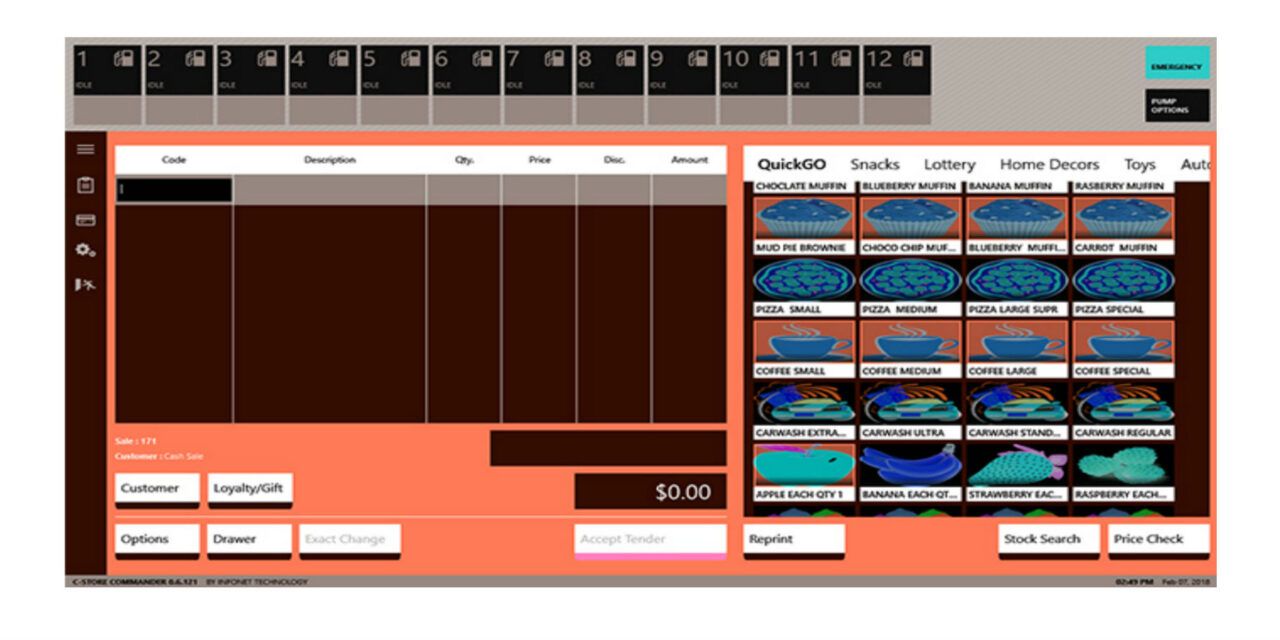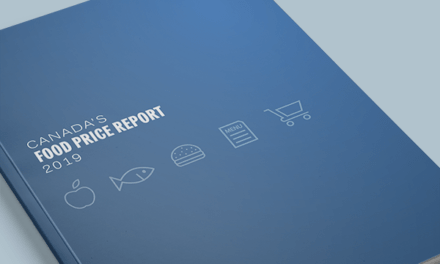
Point-of-Sale Evolves Over Time

Point-of-Sale Evolves Over Time
By Angela Altas
As the Bob Dylan song says, The Times They are a Changin’ and this means that things change with the times, point-of-sale systems (POS) included.
“Like the vehicles that we wash, the point-of-sale systems used in the carwash industry have evolved over time to keep pace with advances in technology,” notes Jason Sears, director of business development, Innovative Control Systems. “While the early point-of-sale systems looked and operated like Ford’s Model A, today’s systems feature the same innovative design, automated functionality, and high performance found in most technologically-driven vehicles.”
IBM released its 3650 and 3660 systems in the mid-1970s, which were wired back to a central mainframe that looked after the processing of transactions. One of the first microprocessor controlled systems is said to have been built by William Brobeck and Associates in 1974 for McDonald’s. The first user interface with a touch-screen was Atari’s 520ST system in 1986 while the 1990s saw the standardization of POS coding language. Today’s systems involve cloud-based computing that allows POS users to access information from anywhere on a variety of devices, including smartphones, tablets or laptops.

For many years, what a transaction involved was a customer coming in, buying some merchandise, paying for it and leaving, notes Dave de la Plante, strategy and program director, Bulloch Technologies.
“It was very much a functional experience,” says de la Plante. “Over the last five to 10 years, the marketing activity has crept in predominantly around adding loyalty programs and making for a better customer experience. Now, there is all kinds of functionality being integrated into one experience. There’s the ability to pre-pay and go pick up the item, for example.”

Bulloch Technologies is working on bringing together solution architecture to tie the various functions of the automobile experience together in one app.
“The challenge isn’t as much the technical ability to bring the experience together as the fact that every retail brand, whether it’s petroleum, quick service restaurant, or parking, wants their own app and they want to control the experience,” says Brad Bossert, director of sales, Bulloch Technologies.
The United States market doesn’t use tap payment technology like Canadians do, notes de la Pointe.
“The US experience will be EMV but they won’t necessarily use a pin number,” he remarks. “They’ll just put their card in the machine, it rings the card and they take it out. Canada has Interac. The US doesn’t. In order to get into the United States market, you need to have a mobile payment offering. Here in Canada, we do have mobile payment apps but we don’t use them a lot. It tends to have a fairly low adoption rate in Canada. Here, we love to tap. It’s so fast and easy. We don’t see value in pulling out our phone, pulling up an app and using it. Whereas in the U.S., it’s about forgetting the path of the card and going right to the mobile.”
As technology changes and customer functionality and experiences increase, it is important to stay on top of things, as well as ensuring PCI and certification compliance. De la Plante notes that businesses reply on companies like Bulloch to ensure they are meeting these requirements.
Technology Transformation
“Point-of-sale technology has undergone massive transformation in recent years to combine payments with the many other aspects of running a business,” said Jeff Guthrie, chief sales officer, Moneris. “iPad-based solutions allow you to gain insight into areas such as inventory management, staff performance and customer history, which can help businesses save time and identify more opportunities for growth. Retailers and restaurants opting to use the old style of register are missing out on a significant opportunity to streamline their operations.”

Changes in carwash point-of-sale systems over the years have been driven by the operators’ desire to increase wash volume, reduce labour costs, and provide a superior customer experience, says Sears.
“Technology is the tool that has helped them achieve these goals,” comments Sears. “The advances in point-of-sale technology, as well as the technological advances in all segments of our industry, have enabled operators to achieve more with less and have greatly contributed to the development of the carwash empires that we see today. While our roots are firmly planted in the point-of-sale segment of the industry, over the course of the past 30+ years, ICS has expanded our offerings to include a wide range of visionary products designed to make it easier to own and operate a carwash, or multiple carwashes, while increasing profitability.”
The Innovative Control Systems lineup of point-of-sale solutions features Auto Sentry payment terminals and the WashConnect point-of-sale management system.
While much has changed, Lee Barter, senior vice president, Infonet Technology Corporation, describes the evolution of point-of-sale systems as slow when compared to the development of iOS and Android phone apps, “but well measured given the unique demands that the retail fuel and convenience industry have with the variety of hardware – POS computers, scanners, printers, price signs, fuel dispensers, and loyalty programs – that require integration and control.”
Infonet Technology Corporation offers modern dynamic point-of-sale software that is designed specifically for the needs of Canadian fuel retailers.
“Our products can be fine-tuned, as well as customized, to meet the unique requirements that our customers must have in place,” states Barter. “When I think of the history of point-of-sale systems, what comes to mind are integrated systems, payments, fuel, loyalty, digital marketing, gift cards, CRM, dynamic inventory management, detailed sales and product analysis and reporting. All of these have allowed for a better customer experience, improved product/sales and marketing, better product management and improved profitability.”
Point-of-sale changes have been brought about by a number of different drivers, says Barter.
“Customer requirements are first and foremost,” states Barter. “There are regulatory drivers, chip and pin technology, payment card industry (PCI) processing changes, dial-up to high speed internet, operating system changes, better hardware, more intense system integration, and big data needs. In the future, the expectation is for POS to be smaller, faster, contactless and adaptive.”
Initial point-of-sale advancements in the carwash industry were more consumer focused, providing a simple system to purchase a wash with any payment method the customer chose, says Rich Carpenter, director of customer solutions, Unitec.
“Now, the focus has shifted to operators and providing them with more powerful tools to grow and manage their businesses,” says Carpenter. “Unitec provided customer-activated payment and control systems for automatic carwashes. These products allowed customers to enter a code to activate the carwash and had no POS functionality. Around 1990, cash acceptance was added to allow for purchases at the carwash entrance, followed several years later with credit card acceptance. Our product software has evolved to provide carwash specific marketing applications, such as unlimited washing programs. Additionally, sophisticated carwash management systems provide operators with a single point of access to all their carwash locations.”
Unitec’s first point-of-sale solutions, commercialized over 30 years ago, were simple, keypad-based code entry systems.
“Current products are touchscreen activated and accept payment in all forms commonly available in retail applications,” notes Carpenter. “Our product software is far more complex, offering a variety of tools for growth and analysis of the carwash business. Cloud technology is leveraged to provide a single point of access from the office, home or when travelling.”
Most evolution is customer driven with carwash operators looking for better ways to meet their customers’ expectations and grow their businesses, states Carpenter.
“Evolution in technology is a secondary driver, allowing suppliers to deliver more innovative options,” he says. “Regulations created to protect customer data have led to many changes, most notably in securing point-of-sale and payment applications in compliance with PCI standards and in the adoption of EMV payment technologies.”
Carpenter foresees the continuance of the migration of data and point-of-sale functionality from on premise systems to cloud services.
“Automation will continue to be the centerpiece of the point-of-sale segment of the carwash industry, and the industry as a whole,” notes Sears. “Through the use of innovative new technologies, forward-thinking suppliers will help operators achieve their goals by automating all aspects of the carwash. Imagine, at some point in the not-too-distant future, vast numbers of self-driving vehicles monitoring the after-hours offers presented by automated carwashes, selecting the best option based on a pre-programed set of criteria determined by its owner, travelling to the carwash autonomously, executing the wash, and returning home – all while its owner and the carwash operator are sound asleep. Sounds unimaginable but only a few decades ago, a robotic home vacuum cleaner did too.”
Modern fully automated, cloud-based solutions offer comprehensive reporting and data analysis, and enable businesses to identify sales opportunities and make smarter, more informed business decisions. Times have come a long way from the simple cash register of days gone by. Contactless transactions now account for the majority of card present transactions in Canada, according to the MonerisMetrics Quarterly Report, recently released by Moneris Solutions Corporation.
“The impressive share of contactless payments is a signal that tap-to-pay is here to stay,” said Angela Brown, president and CEO of Moneris. “It’s clear that as we shifted into the spring and summer months, Canadians continued to move quickly through the checkout process. Contactless is driving real change in consumer behavior and it’s exciting to watch. We’re witnessing a shift in the market that’s accelerating the adoption of digital wallets and changing the payments landscape.”
Provinces leading the contactless transactions trend are Prince Edward Island at 57.5 per cent, Manitoba at 56.0 per cent, Ontario at 54.8 per cent, British Columbia at 54.6 per cent, Nova Scotia at 54.4 per cent, Alberta at 53.3 per cent, Saskatchewan at 52.3 per cent, and New Brunswick at 50.0 per cent.


































